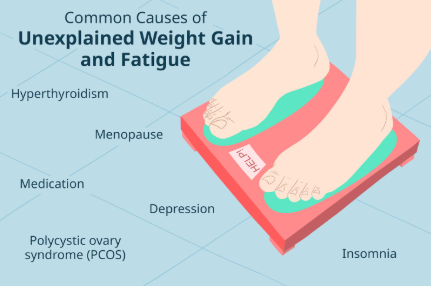Fibromyalgia is a multifaceted disorder characterized by widespread pain, fatigue, sleep disturbances, and cognitive difficulties. It affects millions globally and presents significant treatment challenges due to its complex nature. While there is no cure, various treatment strategies aim to manage symptoms and improve quality of life. Among them, antidepressants—specifically SNRIs (Serotonin-Norepinephrine Reuptake Inhibitors)—have emerged as a central option in pharmacological management.
But are SNRIs the best solution for fibromyalgia, or simply one component of a broader, more individualized treatment approach? This article explores the effectiveness of SNRIs in fibromyalgia care, how they compare to other antidepressants, and what patients need to know before starting or continuing these medications.
Why Antidepressants Are Used in Fibromyalgia Treatment
Though traditionally prescribed for mood disorders, certain antidepressants also possess analgesic properties. Fibromyalgia is not considered a depressive disorder, yet it often coexists with anxiety and depression due to the chronic nature of the illness. More importantly, antidepressants can modulate pain by affecting neurotransmitter levels in the brain and spinal cord.
In fibromyalgia, the central nervous system is hypersensitive to pain stimuli. This dysfunction in pain processing is believed to stem from altered serotonin and norepinephrine pathways—both of which are influenced by antidepressants. By stabilizing these neurotransmitters, antidepressants can reduce pain perception, improve sleep, and enhance emotional resilience.
Understanding SNRIs: How They Work
SNRIs, or Serotonin-Norepinephrine Reuptake Inhibitors, are a class of antidepressants that block the reabsorption (reuptake) of both serotonin and norepinephrine in the brain. This increases the availability of these neurotransmitters, enhancing their effects on mood and pain regulation.
Two SNRIs commonly approved for fibromyalgia include:
- Duloxetine (Cymbalta): Approved by the FDA for fibromyalgia, it is also used to treat major depressive disorder and generalized anxiety disorder.
- Milnacipran (Savella): Specifically approved for fibromyalgia in the US and designed with a stronger noradrenergic effect, making it particularly effective for chronic pain.
Both medications target the descending pain inhibition pathways, reducing the brain’s overreaction to pain signals from the body.
Effectiveness of SNRIs for Fibromyalgia Symptoms
Clinical trials and patient reports suggest that SNRIs can be highly effective in reducing several core fibromyalgia symptoms:
- Pain Reduction: Patients report decreased sensitivity and intensity of pain.
- Improved Sleep Quality: SNRIs help regulate sleep cycles, reducing fatigue.
- Enhanced Mood and Mental Clarity: By balancing neurotransmitters, these medications can lessen brain fog and emotional distress.
- Reduced Anxiety and Depression: Secondary symptoms that often exacerbate fibromyalgia can be controlled more effectively.
However, effectiveness varies widely. Some patients see noticeable improvement within weeks, while others report minimal benefit or intolerable side effects.
Comparing SNRIs with Other Antidepressants
While SNRIs are the most commonly prescribed antidepressants for fibromyalgia, they are not the only option.
Other antidepressants used include:
- Tricyclic Antidepressants (TCAs): Medications like amitriptyline are often used in low doses to improve sleep and reduce muscle pain. However, they can cause sedation and weight gain.
- Selective Serotonin Reuptake Inhibitors (SSRIs): Such as fluoxetine or sertraline, may improve mood but are generally less effective for pain management.
- Atypical Antidepressants: Like trazodone or bupropion, may be used in combination strategies, particularly when sleep disturbance or fatigue are dominant symptoms.
Why SNRIs may be superior:
- They address both serotonin and norepinephrine, offering more comprehensive symptom coverage.
- They tend to improve both emotional and physical aspects of fibromyalgia.
- They are better tolerated than TCAs in long-term use.
Despite these advantages, treatment should be individualized based on symptom profile, medication tolerance, and coexisting health conditions.
Potential Side Effects and Risks of SNRIs
As with any medication, SNRIs are not without risks. Side effects are typically more pronounced during the first few weeks and may subside with continued use.
Common side effects include:
- Nausea or upset stomach
- Insomnia or sleep disturbances
- Dry mouth and constipation
- Sweating and dizziness
- Increased blood pressure (particularly with milnacipran)
In some cases, SNRIs can worsen anxiety or lead to mood swings. It is essential to monitor mental health closely during the initial phases of treatment. Patients with a history of bipolar disorder or uncontrolled hypertension should approach SNRIs with caution.
Who Benefits Most from SNRIs?
SNRIs tend to be most effective in fibromyalgia patients who:
- Have moderate to severe chronic pain
- Experience symptoms of depression or anxiety
- Struggle with sleep disturbances
- Do not respond to SSRIs or other pain medications
- Are looking for a multi-symptom pharmacological solution
For these individuals, SNRIs can significantly improve function and daily life. However, those who are sensitive to medications or have complex medical profiles may require alternative or adjunctive strategies.
Alternatives to SNRIs: Combining Therapies for Optimal Relief
While SNRIs offer valuable benefits, they are rarely sufficient on their own. A multimodal treatment approach is now considered the standard for managing fibromyalgia effectively.
Non-medication therapies that complement SNRIs include:
- Exercise and physical therapy to reduce stiffness and improve circulation
- Cognitive Behavioral Therapy (CBT) to address pain-related stress and thought patterns
- Mindfulness and relaxation techniques for nervous system regulation
- Probiotics and dietary adjustments to support gut health and energy levels
- Sleep hygiene strategies to improve restorative rest
Integrating these therapies with SNRIs may reduce medication dosage requirements and minimize side effects while offering broader symptom relief.
Frequently Asked Questions
1. Are SNRIs approved for fibromyalgia treatment?
Yes, duloxetine and milnacipran are FDA-approved specifically for fibromyalgia. They are among the few medications officially indicated for this condition.
2. How long does it take for SNRIs to work?
Most patients begin to notice improvements in pain and mood within two to four weeks, but full effects may take up to two months.
3. Can SNRIs be combined with other fibromyalgia medications?
Yes, SNRIs are often used alongside other therapies like muscle relaxants, supplements, or non-medication treatments under medical supervision.
4. Are SNRIs safe for long-term use?
They can be used long-term with regular monitoring, although side effects, especially on blood pressure and mood, should be evaluated periodically.
5. What if I don’t tolerate SNRIs?
Alternatives include tricyclic antidepressants, SSRIs, or non-medication therapies. Treatment should be tailored to your specific symptoms and health profile.
6. Can SNRIs cure fibromyalgia?
No, SNRIs do not cure fibromyalgia, but they can significantly reduce symptoms and improve quality of life when used appropriately.
Conclusion
SNRIs represent a significant advancement in fibromyalgia management, offering targeted relief for both physical and emotional symptoms. While not a cure, these medications can be life-changing for patients who respond well to them. As with all treatments, the decision to use an SNRI should be based on a thorough evaluation of symptoms, risks, and personal goals.
When combined with lifestyle changes, supportive therapies, and individualized care, SNRIs can be a cornerstone in the comprehensive treatment of fibromyalgia—helping patients reclaim their lives with greater comfort, function, and hope.
For More Information Related to Fibromyalgia Visit below sites:
References:
Fibromyalgia Contact Us Directly
Click here to Contact us Directly on Inbox
Official Fibromyalgia Blogs
Click here to Get the latest Chronic illness Updates
Fibromyalgia Stores


